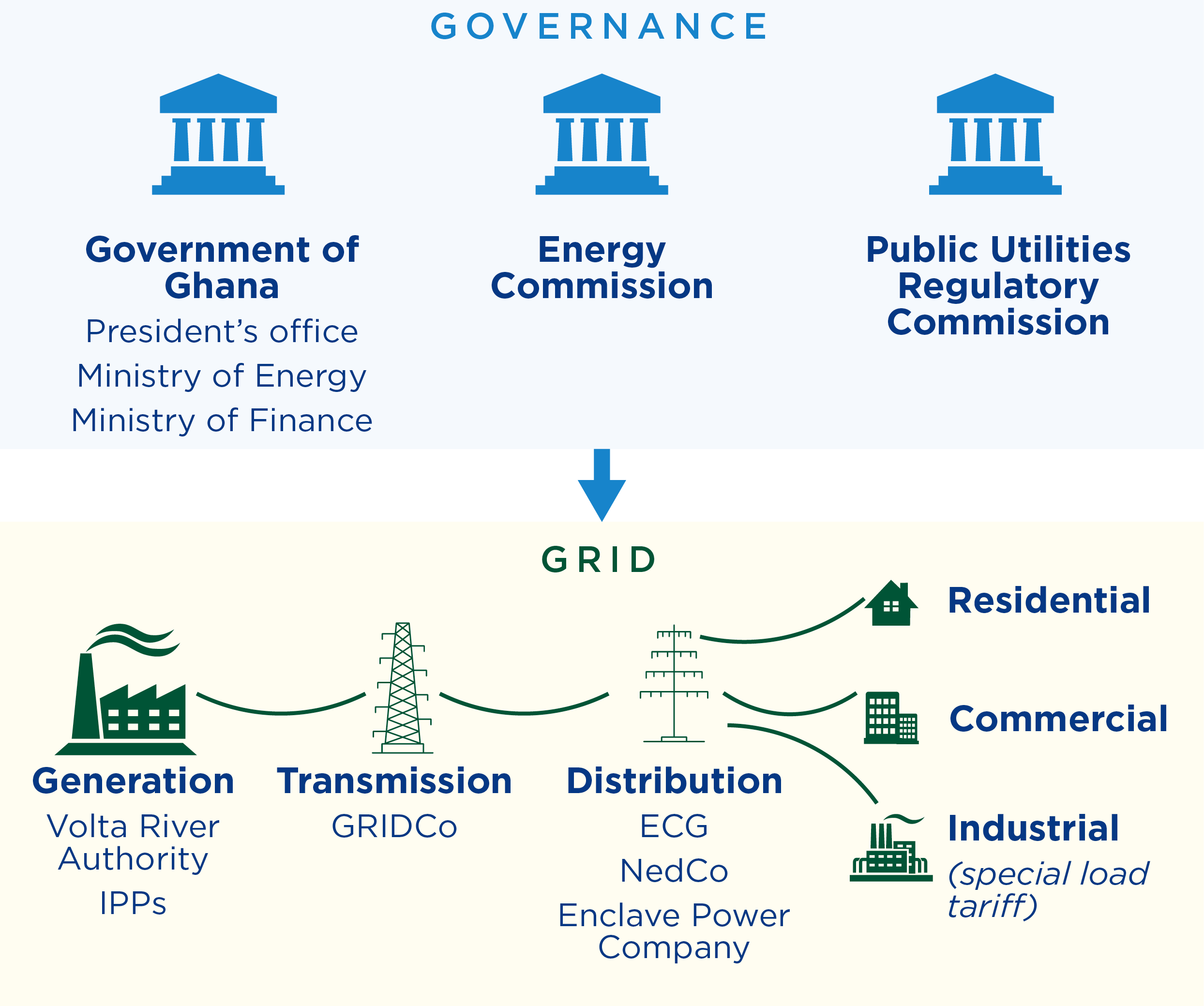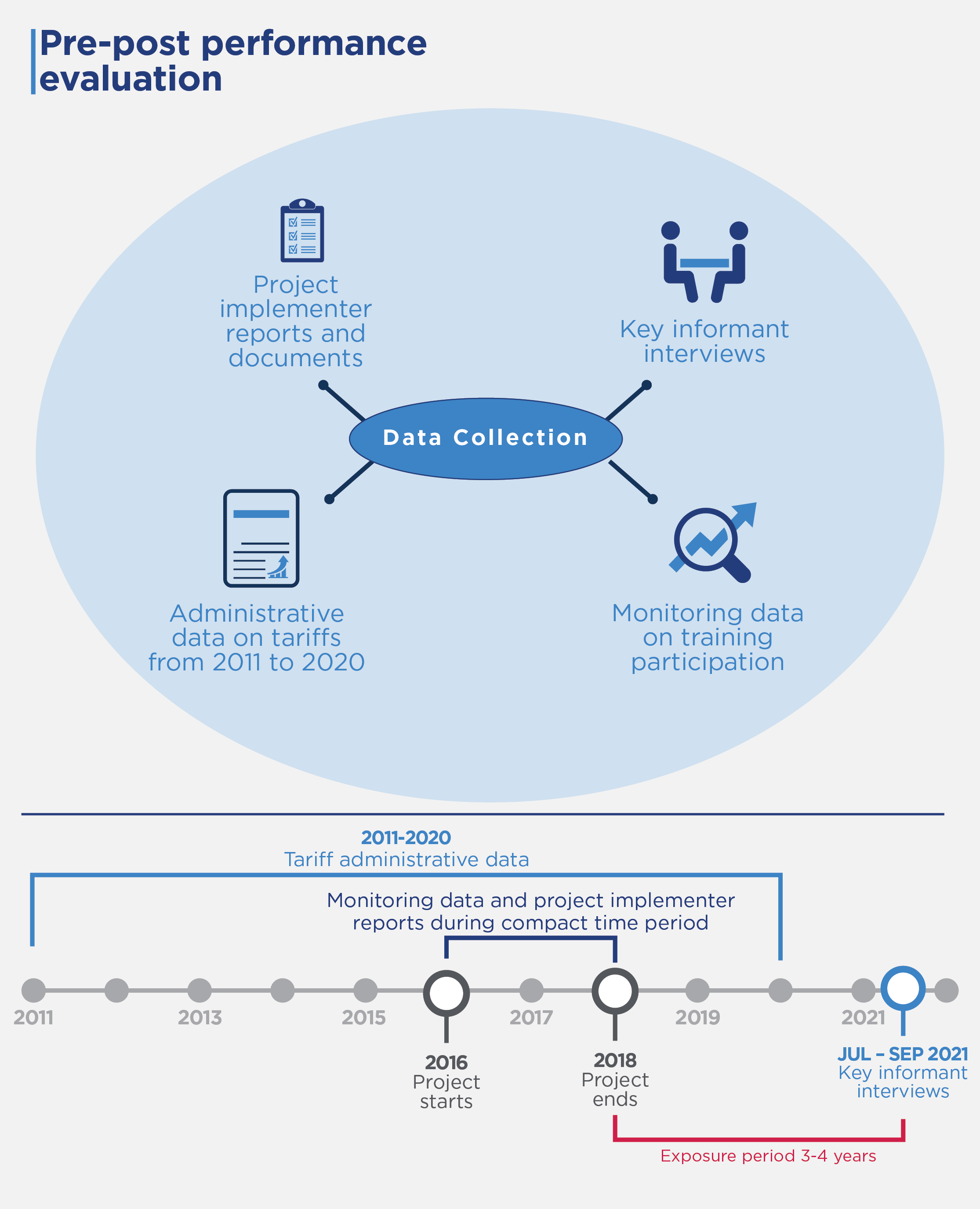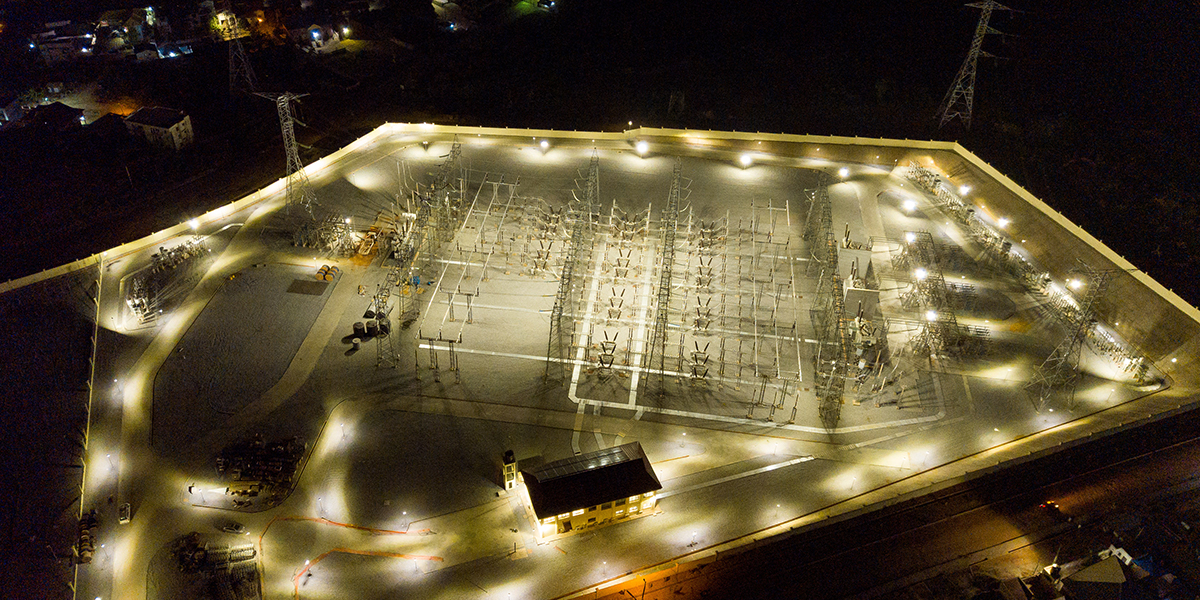Program Overview
MCC’s $316 million Ghana Power Compact (2016–2022) funded the $2.8 million Regulatory Strengthening and Capacity Building Project to ensure the sustainability of compact investments by supporting electricity sector regulatory reform, particularly tariff reform. The project provided tariff studies, technical assistance, and capacity building for Ghana’s electricity sector regulators. These activities supported the theory that an improved regulatory environment would lead to improved electricity quality and sector financial health, ensuring the sustainability of the power sector.
Key Findings
Regulatory Capacity Building
- The project successfully completed a sector capacity scan and delivered training activities to 89 regulatory personnel.
- Limited and sometimes inaccurate data, along with competing stakeholder interests, hampered the regulator’s ability to set tariffs. However, the regulator’s primary challenge is to maintain independence in the face of political pressure.
Tariff Structure and Rates
- The project delivered high-quality tariff studies and a tariff model.
- Leadership at the regulator did not actively engage with the study activities and recommendations, likely because of political pressures.
- The regulator has not changed the tariff structure or rates in accordance with the tariff plan funded by the compact.
- Recent tariff adjustments have not moved toward cost-reflective tariffs, and the average tariff is not sufficient to cover utility operating costs.
Tariff Reform Challenges
- Stakeholders are pessimistic that the regulator will prioritize cost-recovery and cost-reflective tariffs in the foreseeable future, given political pressures.
Evaluation Questions
This final performance evaluation was designed to answer the following questions:
- 1
Was the project implemented as designed? What were implementation successes and challenges? - 2
Did the project result in cost-reflective tariffs or tariffs that were on track to be cost-reflective by the end of the compact? - 3
To what extent were tariff changes driven by reforms to the tariff structure and methodology versus other factors? - 4
Did the project reduce electricity underpricing? - 5
Did the project contribute to improve tariff targeting? - 6
Were improvements in project outcomes sustained??
Detailed Findings
Regulatory Capacity Building

Sector Actors
The capacity building activities funded under the project focused on increasing the regulator’s capacity to monitor utility performance and provide better information to the electricity sector to promote transparency and accountability for results. The activity completed a capacity and needs assessment and trained 89 regulatory personnel. The training activities were well-received and involved participation from the key organizations in the sector. However, the regulator’s processes continue to lack transparency, as evidenced by continued use of the override feature in quarterly tariff adjustments.
Several of the risks identified during project design proved to be key factors limiting the Government of Ghana’s support and the regulator’s implementation of reforms, including stakeholder resistance to changes, political backlash, and customer resistance to tariff increases. From a technical perspective, the limited availability of data, a reliance on assumptions and forecasts, and sometimes inaccurate and inconsistent data from the utilities hampered the regulator’s ability to set tariffs. However, the regulator’s primary challenge is to maintain independence in the face of political pressure.
Tariff Structure and Rates

Distribution System
The project delivered high-quality tariff studies that included a pathway to achieving cost-recovering and cost-reflective tariffs. The tariff plan proposed reducing the number of customer rate categories and eliminating cross-subsidies over time by increasing tariff rates for residential customers and decreasing tariff rates for commercial and industrial customers.
At the time of the evaluation, the regulator had not changed the tariff structure in accordance with the Tariff Plan, and tariff adjustments had not resulted in cost-reflective tariffs. In March 2018 (a little over a year after the December 2016 general elections in which Nana Akufo-Addo was elected President), the regulator implemented a tariff reduction across all customer classes, contrary to the cost-of-service study’s recommendation to increase the residential tariff. Stakeholders noted that the high cost of electricity for industrial customers makes them non-competitive in international markets and has led some to use alternative sources of electricity, generate their own electricity, and/or shift electricity-intensive production activities outside the country.
To date, the tariff structure comprises the same four residential tariff blocks and three commercial tariff blocks that it has had since before the compact entered into force. However, the regulator has improved targeting of tariff subsidies for poor households, as evidenced by reduced fixed monthly fees for low-energy-consuming customers.
Tariff Reform Challenges
The tariff reduction resulting from the regulator’s major tariff review of 2018, as well as subsequent tariff adjustments, make clear that tariffs are not on track to be cost-reflective. The project faced stakeholder and customer resistance to tariff adjustments and a lack of political will among government officials that prevented it from achieving its objectives. Although the regulator is supposed to be an independent body, it struggles to maintain its independence in the face of political pressure. Further, stakeholders doubted that regulatory decision-making would change in the foreseeable future and reported no movement toward using the tariff model funded by the project.
MCC Learning
When providing technical assistance, project implementers should document how stakeholder equities are impacted by proposed reforms and develop action plans for engaging with those who might resist the envisioned reforms.
Future tariff reform projects should identify disincentives and detractors to reform and ensure the right set of incentives and political will are in place for regulators to take up desired reforms.
Future reform projects’ communications strategy should include a transparency and disclosure activity to make the benefits of reform widely known among the public.
MCC country teams should articulate a clear, specific, and measurable project objective to describe what project success looks like.
For accountability purposes, MCC should ensure evaluation questions reflect all components of the project objective.
Evaluation Methods

The evaluator used a pre-post performance evaluation design to assess project implementation, outcomes, and prospects for sustainability. Quantitative data included administrative data on tariffs from 2011 to 2020 and monitoring data on training participation collected by project implementers since the start of the compact in 2016. The evaluator supplemented these data with project implementer reports and documents (most notably the Tariff Plan funded by the compact) and 22 key informant interviews conducted between July and September 2021. Most project activities were completed by July 2018, meaning that the exposure period ranged from three to four years.
Next Steps
Given the limited effects found by the evaluation on the primary outcomes targeted by the project, MCC determined that further evaluation work to assess the achievement of outcomes at a later date would not be meaningful or cost-effective and therefore closed the evaluation prior to compact close.
2022-002-2681


